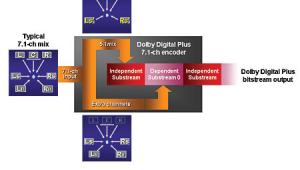Home Theater Boot Camp: Bass Management
Bass: It is undoubtedly the most misunderstood aspect of a home theater system's performance and, in some ways, the least appreciated—especially among the higher-end ranks. Bass' bad rap (no pun intended) derives from a number of sources, but its fundamental undoing is its poor implementation in the vast majority of audio systems—from the genius who cruises around with 10 $50 monotone subwoofers in the trunk of his car to the home theater owner who hasn't put forth the considerable time and effort it takes to properly calibrate low-frequency output. Poor-quality subs, of which there is no shortage, are as much to blame in this situation as user error. The bottom line is that quality bass performance is critical to any audio, music, or home theater system, and its journey begins long before the signals ever reach our speakers.

Proper bass management through your system's electronics is a crucial step not only toward achieving effective low-frequency output but toward achieving a balanced, accurate sound throughout the entire system. In a nutshell, bass management consists of crossover networks that determine how, when, and where low-frequency signals (usually defined as signals below 200 hertz) will be executed. These crossovers are often implemented in the surround processor itself. These days, most crossovers are incorporated into an A/V receiver or preamp/processor, but they can also be found in some source units that have six-channel outputs, such as an SACD or a DVD-Audio player. Many active subwoofers also incorporate crossover networks that can be used to filter signals, but these systems take a different approach.
![]()
Unfortunately, most internal bass-management systems are limited and relatively inflexible. The most common bass-management system in a receiver, pre/pro, or source unit is one that gives you either a large or small option for your front, center, and rear speakers, plus a simple on/off option for the subwoofer. The small setting engages a high-pass filter (usually at the THX-championed 80-Hz point) that redirects the signals below the crossover point for those channels to the sub, if you have one, or to the main speakers, if you don't (or you forgot to turn it on in the processor). The large setting allows those channels to receive a full-range signal.
An example of most bass management systems' inflexibility is that many of them won't allow you to send a full-range signal to the front speakers if the subwoofer is engaged. In other words, if you want to use a sub, they force you to filter out all of the bass from the fronts and send everything below the fixed crossover point to the sub. This is fine if you're using a sub/sat system or front speakers that are incapable of reproducing low frequencies. However, for those of you who use powerful amps and large front speakers that are perfectly comfortable with signals down in the sub-50-Hz region, this brand of bass management can be considerably limiting.
The debate over how to handle bass management is a hotly contested one that is ongoing. On one side, you have what is essentially the THX camp: Their fundamental philosophy is that all of a home theater system's full-range channels should be crossed over at 80 Hz (with a 24-decibel/octave slope for the low-pass filter and a 12-dB/octave slope for the high-pass filter) and that the subwoofer should handle everything below 80 Hz. This thinking originated in the movie theater, where removing the low-frequency duties from the main channels' amps and speakers significantly increases the system's dynamic capabilities and reduces the chance of distortion. There are many people, though, who feel that this fixed-crossover concept doesn't transfer well to all home theater systems; these people would at least like the choice of employing the THX mode or designating their own crossover settings based on what works best for their particular system in their particular room.
Personally, I think the THX methodology is valuable in creating standardization (THX-certified products, even from different manufacturers, will usually work well together in many respects), and it will work well for many systems—especially, of course, those that employ bass-limited speakers. On the other hand, I'll never own a processor that doesn't give me options beyond the THX implementation, and I definitely try to avoid simple large or small implementations (especially those that don't let you select large fronts and a sub at the same time). Unfortunately, this means that my pool of processor options is limited and relatively pricey.
Successful bass management involves both determining your personal preference and understanding some of the inner workings of your equipment. Two of the most common mistakes surrounding bass management involve properly implementing the system when you use the 5.1-channel analog inputs on your receiver or pre/pro and situations where there is a crossover network in both your processor and your sub (which is becoming far more common).
- Log in or register to post comments





















































